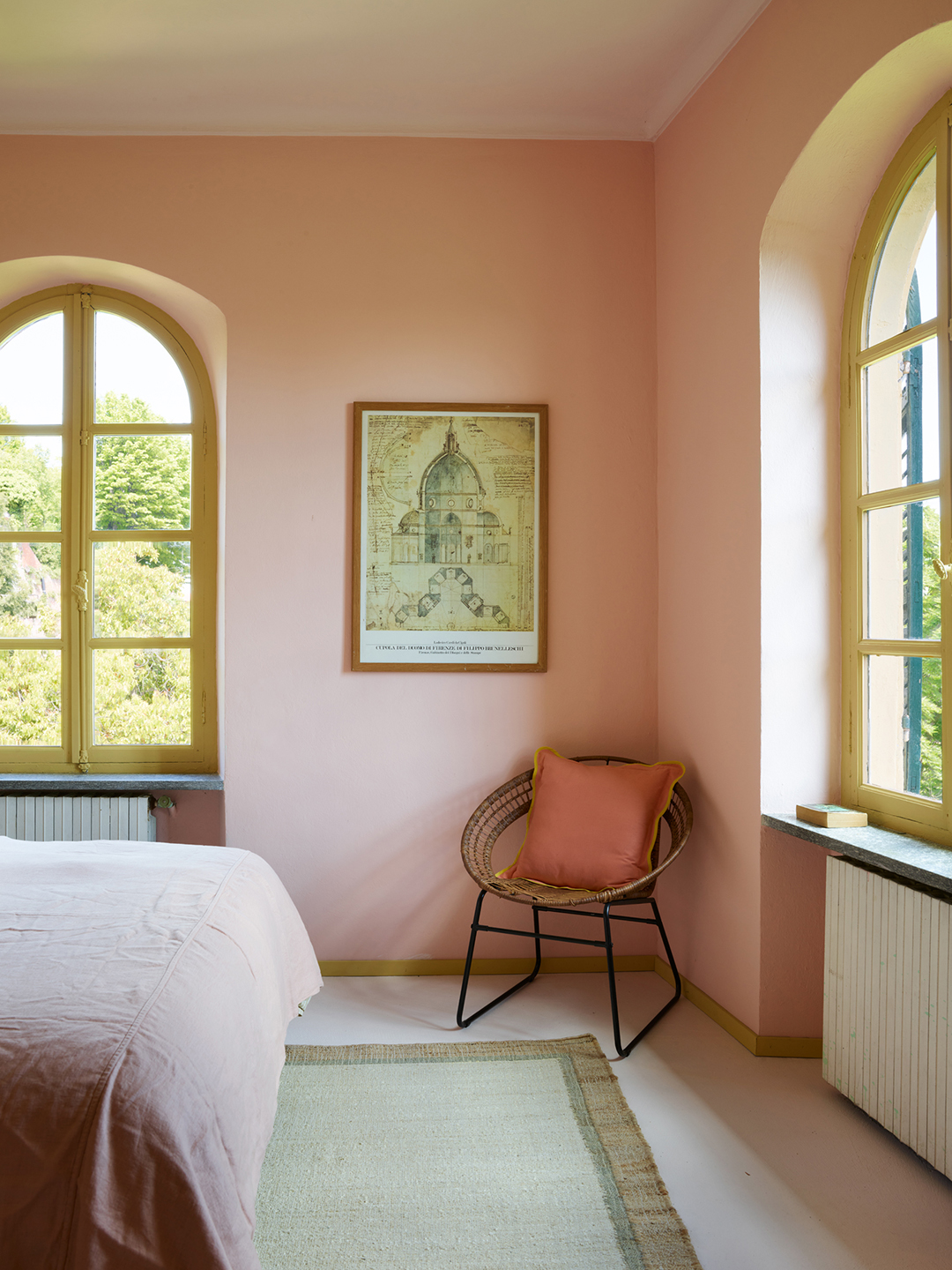We may earn revenue from the products available on this page and participate in affiliate programs.
London-based journalist and interiors expert Kate Watson-Smyth long dreamed of snapping up a second home in Italy. She just didn’t expect to end up with a 300-year-old, 24-room villa when she finally did it. Set in a village half an hour from Turin, the grand house kept popping up on her and her husband Adam Leigh’s searches, so they eventually went to view it—“just to rule it out, because it was far too big,” she remembers.
Spoiler: It immediately stole their hearts. “Adam walked around one corner, and I walked around the other, and we were peering over the hedge looking in. When we met up in the middle, we were both crying, and we hadn’t even seen inside,” she says.



Decorating 24 rooms proved straightforward, thanks to the last owner, who offered to sell some existing pieces, and the fact that Watson-Smyth had a stash of furniture just sitting in London. But the bones of the house clearly required an update, and reality finally sank in once they collected the keys in the spring of 2023. “We couldn’t speak for half an hour. It was like, ‘Oh, my God, what have we done?’ The scale of it was terrifying, but at the same time, it was my dream,” says Watson-Smyth.


A seasoned renovator who has created an interior design course to help others, her aim wasn’t to make the historic home appear brand-new but rather for it “to look like we’d moved in and just freshened it up.” They fell in love with the faded wall colors and embraced a typical Italian country kitchen with a simple marble countertop and open lower shelving.



There was no budget for major structural work, so she made sense of the layout by allocating six bedrooms, four bathrooms, two studies, two kitchens, and two lounges. For herself and Leigh, she created an indulgent primary suite with an adjoining bathroom and dressing room. The cue for the space’s wallpaper was the century-old wisteria plant growing outside, beloved by the house’s former owner, a woman named Claudia who lived there with her granddaughter, Lucrezia. Watson-Smyth named the room in Claudia’s honor. “We wanted to pay tribute to her as the matriarch of a much loved family house,” she says. Painting the freestanding bathtub next door a coordinating shade of lilac was the next logical step.


Watson-Smyth ran with the theme of naming the bedrooms: The one with the floral ceiling is called Iris, while the pink and yellow suite is named Gloria after Leigh’s mother, who loved Italy and had an apartment in Liguria for 30 years. To give each space even more personality, she collaborated with the paint brand Graphenstone to create a series of 12 hues (available to shop). The fact that Graphenstone paints are breathable—in other words, actually improve indoor air quality and prevent mildew—was a big draw. “When you’re not in a house for a period of time, you have to be really careful about damp and mold,” she says.

The encaustic cement bathroom tile provided another opportunity for Watson-Smyth to flex her design muscles. Created with Maitland & Poate, one of the patterns is based on a tile she found in a reclamation yard outside Turin. The colors were mixed to exactly match the paint range, “which hasn’t really been done before and seemed like a good idea,” she explains. The scale of the property has also presented a business opportunity, though not of the Airbnb variety. Watson-Smyth is offering design retreats for people to experience workshops and talks at the house alongside shopping trips (and, of course, a slice or two of pizza).


When Watson-Smyth’s adult sons come to visit, there’s no shortage of spots for them to retreat to. A once awkward corridor is now a cozy game room wrapped in an immersive mural and complete with a card table. The upstairs sitting room (previously all white) has been made over in a bold green and swathed in a Liberty wallpaper. Taking up the carpet revealed old terracotta tile sadly ruined beyond repair, so they ripped it out and leaned into the concrete, which Watson-Smyth, seeing only the positives, plans to eventually polish. “It works because I like the juxtaposition between it and the incredibly luxurious wall covering,” she says.

The most satisfying part of the project, though, is knowing all the locals—including Claudia—approve. “Everybody was worried we were going to rip everything out and fill it with marble. But [they told us] that, actually, it looks like it’s always been this way,” she shares. “That’s the highest compliment anyone could have given me.”





